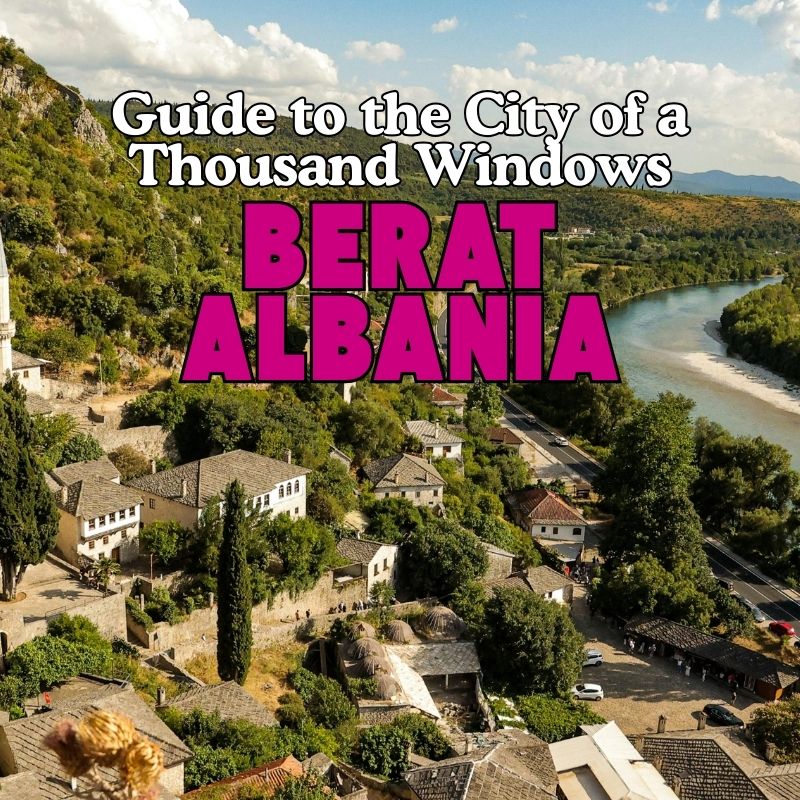
Berat Albania
Guide to the City of a Thousand Windows
Berat Albania – Berat, often referred to as the “City of a Thousand Windows,” is one of Albania’s most enchanting destinations. Nestled along the banks of the Osum River and framed by rugged mountains, the city is both a living museum and a vibrant modern community. Its timeless beauty and harmonious blend of Byzantine, Ottoman, and Albanian influences make it an essential stop for any traveler exploring the Balkans. Recognized as a UNESCO World Heritage Site, Berat captivates visitors with its picturesque old quarters, historic landmarks, welcoming locals, and rich traditions. More than just a destination, it is an experience that immerses you in centuries of history while still offering the charm of contemporary Albanian life. In this guide, you will explore everything that makes Berat special, from its historic quarters and impressive fortress to its food culture, nature, and surrounding attractions.
The Charm of Berat
Historical Importance – Berat Albania
Berat has a history that stretches back more than 2,400 years, making it one of Albania’s oldest continuously inhabited cities. Its strategic location along the Osum River allowed it to flourish as a crossroads of trade and culture. From the Illyrians and Romans to the Byzantines and Ottomans, each era has left its mark on the city’s identity. The architecture, traditions, and landmarks are living testaments to this layered past, where history is not just remembered but lived daily.
Read also – Vegan restaurants near me: Excellent Tips For Best Experience
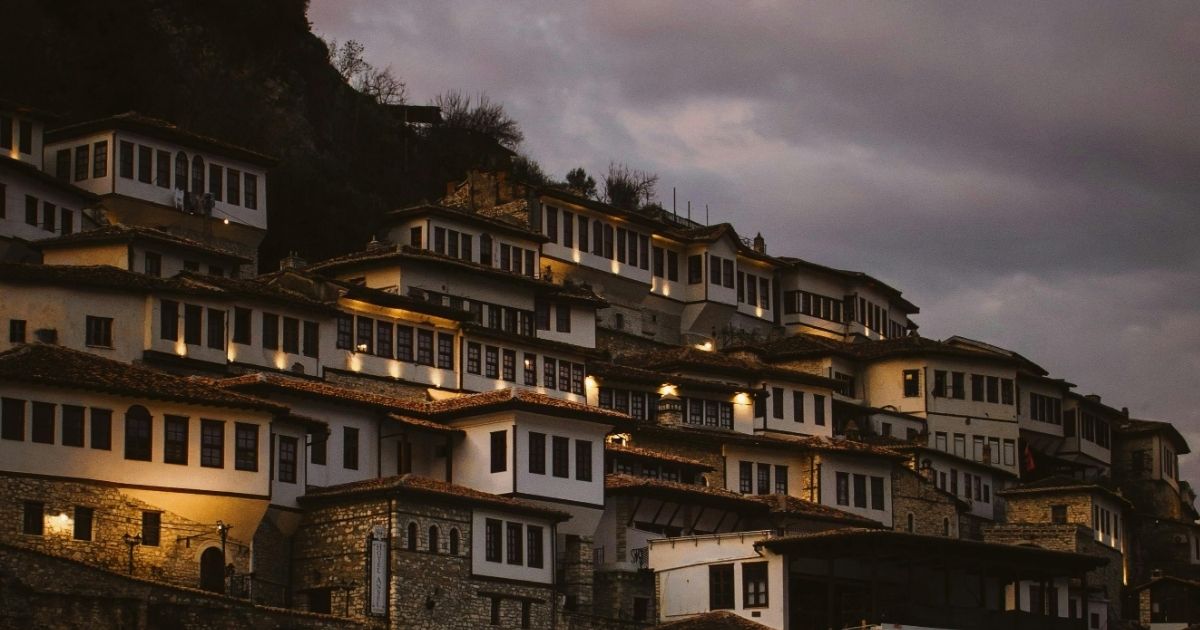
Unique Architecture
The charm of Berat lies not only in its historical significance but also in its unique architecture. Whitewashed stone houses cascade down the hillsides, their large windows giving the city its famous nickname. These homes, built in the Ottoman style, appear almost stacked upon each other, creating a stunning visual harmony that delights visitors. Walking through the narrow cobblestone streets, you are constantly reminded of the city’s enduring character. Every detail, from the carved wooden doors to the tiled roofs, reflects the craftsmanship of generations.
UNESCO World Heritage – Berat Albania
In 2008, Berat was inscribed as a UNESCO World Heritage Site alongside Gjirokastër, another Albanian city known for its cultural heritage. The designation recognizes Berat as a rare example of an architectural and historical ensemble that has endured centuries of change. UNESCO highlighted the coexistence of diverse religious and cultural communities as one of the city’s defining features. This recognition not only helps preserve the city but also draws travelers from around the world, eager to explore its timeless beauty.
Read also – Pictures of Greenland: A Complete Travel Guide
Exploring the Old Towns
Mangalem Quarter – Berat Albania
The Mangalem Quarter, located on the left bank of the Osum River, is perhaps the most iconic part of Berat. Once the heart of the Ottoman city, its winding lanes and traditional houses invite you to step back in time. The quarter is particularly enchanting at sunset, when the whitewashed walls glow in golden light. Exploring Mangalem means getting lost in its labyrinthine streets, discovering hidden courtyards, and marveling at the views that open up around every corner.
Gorica Quarter
Across the river lies the Gorica Quarter, equally charming but slightly less visited, which makes it feel even more authentic. Gorica is characterized by its stone houses and peaceful atmosphere. Walking through its narrow alleys, you will notice the slower pace of life. Locals still gather outside to chat, and children play freely in the streets. From Gorica, you also get some of the best panoramic views of the Mangalem Quarter, creating the classic image of Berat that appears in postcards and travel guides.
Read also – Maine Hiking Acadia: Exploring the Best Trails in National Park
The Gorica Bridge – Berat Albania
Connecting the Mangalem and Gorica quarters is the historic Gorica Bridge, built in the 18th century. The stone bridge is more than just a practical link; it is a symbol of unity between the two sides of the city. Crossing the bridge is an experience in itself, offering sweeping views of the Osum River and the surrounding hills. The bridge is especially photogenic at dawn and dusk, when its arches reflect beautifully in the calm river waters.
Berat Castle (Kalaja e Beratit)
History of the Castle – Berat Albania
Perched on a hill overlooking the city, Berat Castle is one of Albania’s most impressive fortresses. Its origins date back to the 4th century BC, though much of what stands today was shaped during the Byzantine and Ottoman periods. The castle has witnessed countless battles, serving as a stronghold for empires and a refuge for locals. Its walls still encircle much of the old town, creating an atmosphere where history feels alive.
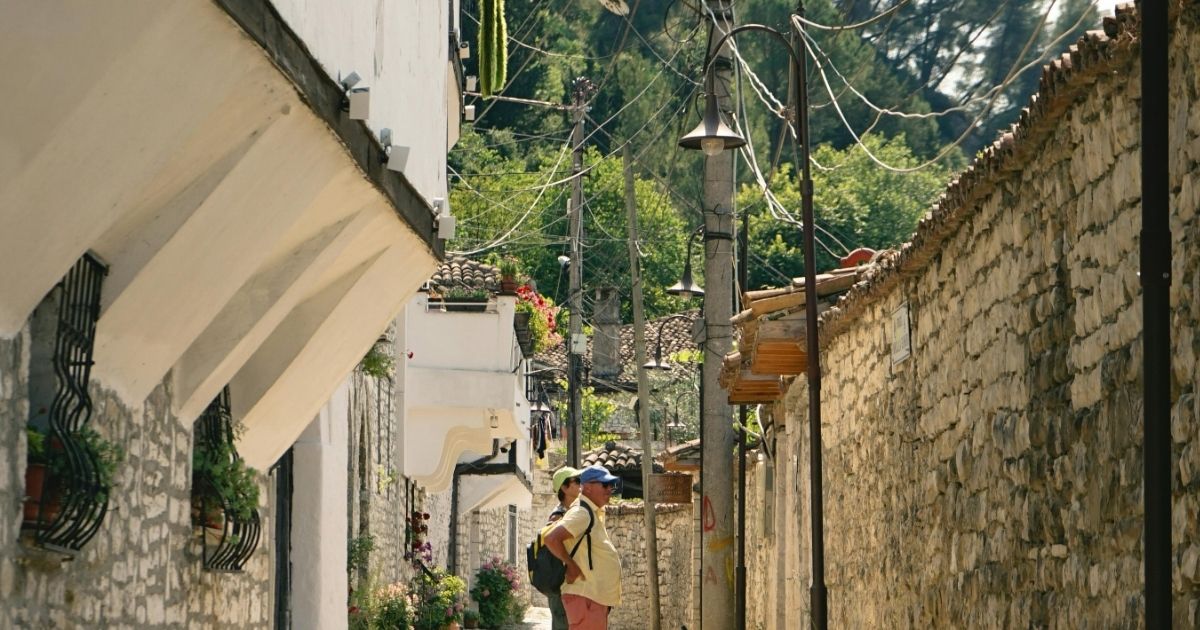
Landmarks Inside the Castle (Expanded)
As you walk through the ancient gates of Berat Castle, you immediately feel a sense of timelessness. The fortress is not simply a relic of the past but rather a living space filled with history, culture, and tradition. One of the most striking landmarks inside the castle is the Church of the Holy Trinity, a small yet beautiful example of Byzantine religious architecture. Its stone walls and elegant dome reflect the artistry of medieval builders, while its location on the southern edge of the citadel provides breathtaking views of the Osum River valley below. Visitors often pause here to take in the serene atmosphere, which feels almost suspended in time.
Another important site is the Red Mosque, recognized by its partially standing minaret. Although time has worn down much of its original structure, the mosque still serves as a powerful reminder of the Ottoman period in Berat’s history. Standing nearby, the White Mosque further illustrates the layers of religious and cultural identity that have coexisted within the castle walls for centuries.
Equally significant are the residential quarters inside the fortress. Unlike many European castles that remain empty monuments, Berat Castle continues to be a lived-in community. Families inhabit traditional stone houses that line the narrow streets, creating a rare sense of continuity between past and present. As you stroll through the alleys, you might see laundry hanging from balconies, children playing, or locals selling homemade goods such as honey, olive oil, or handicrafts. This everyday life gives Berat Castle its extraordinary authenticity.
Local Life in the Castle – Berat Albania
Life inside Berat Castle feels both historic and alive. Families continue to inhabit stone houses that stand proudly within the walls. Walking the narrow alleys, you see daily life unfold with striking simplicity. Women hang laundry from wooden balconies while children chase one another across cobbled streets. This daily rhythm gives Berat Castle a warm and welcoming character.
Locals often sell homemade products directly from their homes. Honey, olive oil, and handwoven textiles are common items offered to visitors. These goods reflect traditions passed down through generations. Buying from the residents supports the community and preserves its unique lifestyle.
Small cafés and guesthouses operate within the fortress, often inside centuries-old houses. Staying here allows travelers to experience history first-hand. Every stone, every doorway, carries stories of the people who lived here long before.
The blending of heritage and modern life is rare in such sites. In Berat, however, it feels natural and enduring. Living history surrounds you at every turn, inviting you to pause and connect. This living atmosphere makes Berat Castle not only a monument but also a community.
Read also – Tatra Valleys: Ultimate Travel Guide to Nature and Adventure
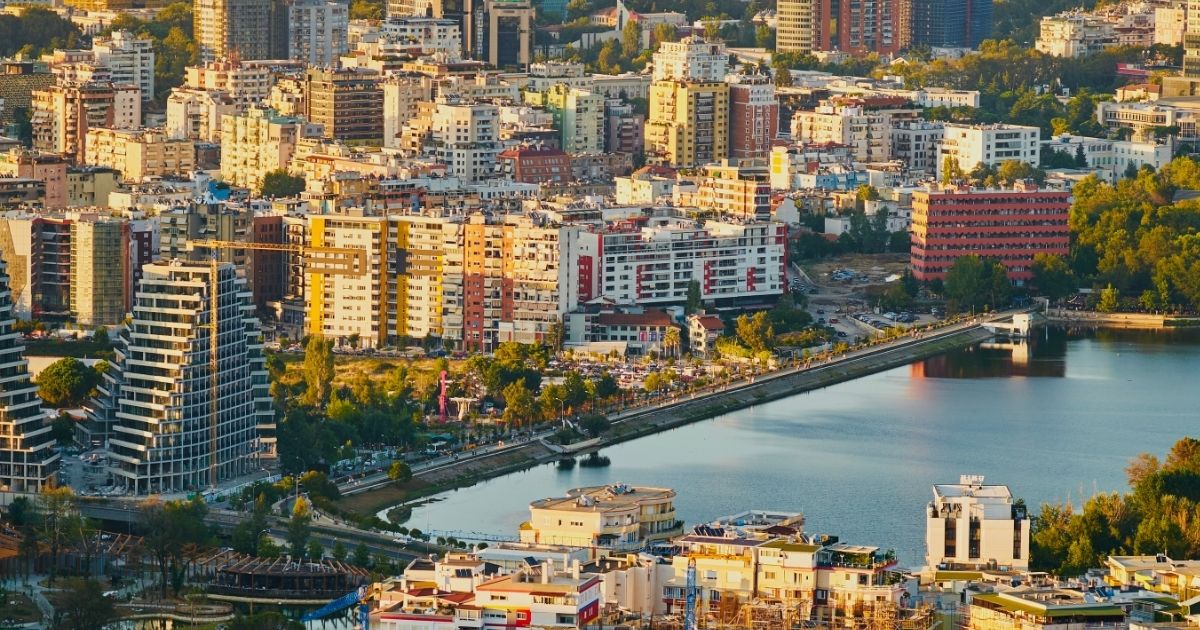
Museums and Cultural Highlights
Berat holds several museums that preserve and celebrate its rich cultural identity. The most famous is the Onufri Museum, located inside the Church of the Dormition of St. Mary. This museum displays vibrant icons painted by Onufri, Albania’s renowned 16th-century artist. His bold red pigment, still unmatched today, draws immediate attention and admiration.
The Ethnographic Museum offers another perspective on life in Berat. Set inside an Ottoman-era house, it showcases traditional clothing, tools, and household items. These artifacts reveal how Albanians lived centuries ago, highlighting daily customs and social traditions.
Art enthusiasts also enjoy the National Iconographic Museum, which contains icons from various centuries. Each piece tells a story of faith and artistry. Visitors often leave with a deeper respect for Albanian religious art.
Smaller cultural centers and galleries occasionally host exhibitions or performances. These events connect the city’s long history with its vibrant present. Together, the museums offer a complete journey into Berat’s artistic, social, and spiritual past.
Exploring these institutions enhances any visit. They provide context to the monuments and streets, turning sights into stories. With every display, Berat’s cultural depth becomes clearer, leaving travelers both informed and inspired.
Read also – Malt Liquor: A Cultural Sip Around the World
Religious Heritage – Berat Albania
Berat is often called the “city of coexistence” because of its diverse religious heritage. Here, churches and mosques stand side by side. The Byzantine churches inside Berat Castle showcase remarkable frescoes and iconography. Many date back to the 13th century, preserving both art and faith.
The Church of the Holy Trinity is especially admired. Its compact design and beautiful location make it a favorite landmark. Other smaller churches also remain active, continuing centuries of Orthodox Christian worship.
Equally important are the Ottoman mosques, built during centuries of Turkish influence. The Lead Mosque, with its elegant dome, reflects the architectural mastery of that period. The King’s Mosque and the Bachelor’s Mosque add to this legacy, each carrying historical significance.
What makes Berat unique is harmony. Christians and Muslims have lived here peacefully for centuries, often celebrating together. This coexistence gives the city a special character. Visitors often notice the respect shared between faiths.
Religious sites in Berat are not only monuments. They remain spaces of worship, reflection, and unity. Together, they tell a story of tolerance and shared heritage rarely found elsewhere.
Read also – Half Dome Deaths: What Every Hiker Should Know
Nature and Surroundings
Berat is surrounded by breathtaking landscapes that add to its charm. The Osum River flows through the city, dividing it into two picturesque halves. Its calm waters reflect the houses above, creating postcard-perfect views.
North of Berat lies Mount Tomorr, a majestic peak reaching over 2,400 meters. It is sacred for both Christians and Muslims. Each summer, people climb the mountain during a traditional pilgrimage. From the top, the panorama stretches across valleys and hills.
The Osum Canyon, located nearby, is another natural wonder. Its high cliffs and winding river attract hikers, kayakers, and photographers. During spring, the canyon is especially beautiful, with flowers blooming along the rocky edges.
Around Berat, rolling hills are covered with olive groves and vineyards. These landscapes provide not only stunning views but also delicious products. Local families have farmed the land for generations, keeping traditions alive.
For those who enjoy walking, the countryside offers many trails. Paths lead through small villages, past stone bridges, and into quiet fields. These routes let visitors discover the slower rhythm of rural Albania.
Nature around Berat provides balance to its historic core. The combination of mountains, rivers, and fertile valleys makes the city unforgettable.
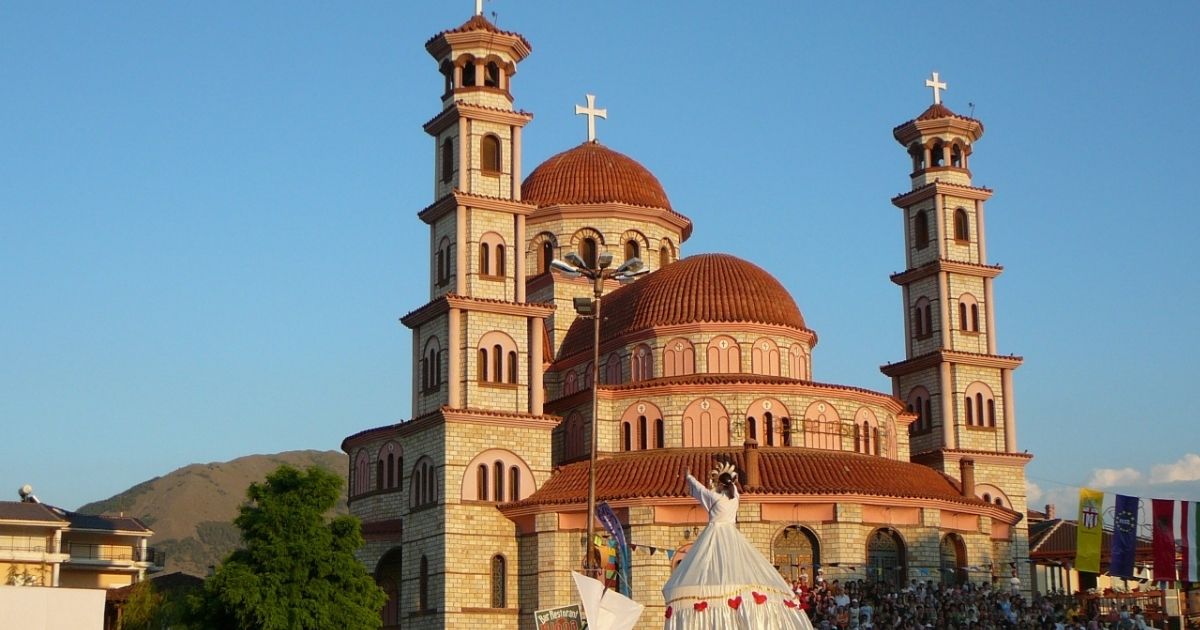
Traditional Cuisine – Berat Albania
Berat’s cuisine reflects Albania’s rich flavors and traditions. Local food is simple yet full of taste. Recipes are passed down through families, keeping heritage alive.
One of the most famous dishes is byrek, a savory pastry filled with cheese, spinach, or meat. It is often served fresh from local bakeries. Another popular meal is tavë kosi, baked lamb with yogurt and eggs. Its creamy texture makes it a favorite across Albania.
Vegetarians enjoy stuffed peppers and eggplants, cooked with rice and herbs. Seasonal vegetables are used in most meals, giving dishes freshness and color. Grilled meats, often seasoned with local spices, are common for family gatherings.
Olive oil from the surrounding groves adds richness to many recipes. Bread, baked daily, is served at nearly every table. Cheese and yogurt, made from sheep or goat milk, also play an important role.
For dessert, visitors can try baklava or ballokume, sweet treats with deep roots in Albanian culture. Fresh fruit, especially figs and grapes, is also widely enjoyed.
Dining in Berat is not just about food but also hospitality. Meals are shared with warmth, often accompanied by local wine or raki. This creates an atmosphere that makes visitors feel welcome.
Read also – Pee Pee Island: Exploring the Myths, Beauty, and Travel Secrets
Festivals and Events – Berat Albania
Berat hosts lively festivals that showcase its culture and traditions. These events bring locals and visitors together in celebration.
One of the most important is the Onufri Festival, named after the famous Albanian painter. It highlights art, music, and performances inside Berat’s castle. Visitors enjoy exhibitions and concerts under the night sky.
Another event is the Wine Festival, held in autumn. Local wineries present their best wines, while guests sample food and enjoy folk music. The festival reflects Berat’s long winemaking history.
Religious celebrations are also significant in the city. Easter and Christmas bring communities together with shared meals and church services. Muslim holidays like Bajram are marked with family gatherings and charity.
During summer, folk music and dance festivals fill the streets with color. Traditional costumes, instruments, and songs remind people of Albania’s rural roots. Both young and old join the celebrations.
These events offer more than entertainment. They help preserve traditions while creating memorable experiences for travelers. Each festival strengthens Berat’s identity and highlights its cultural diversity.
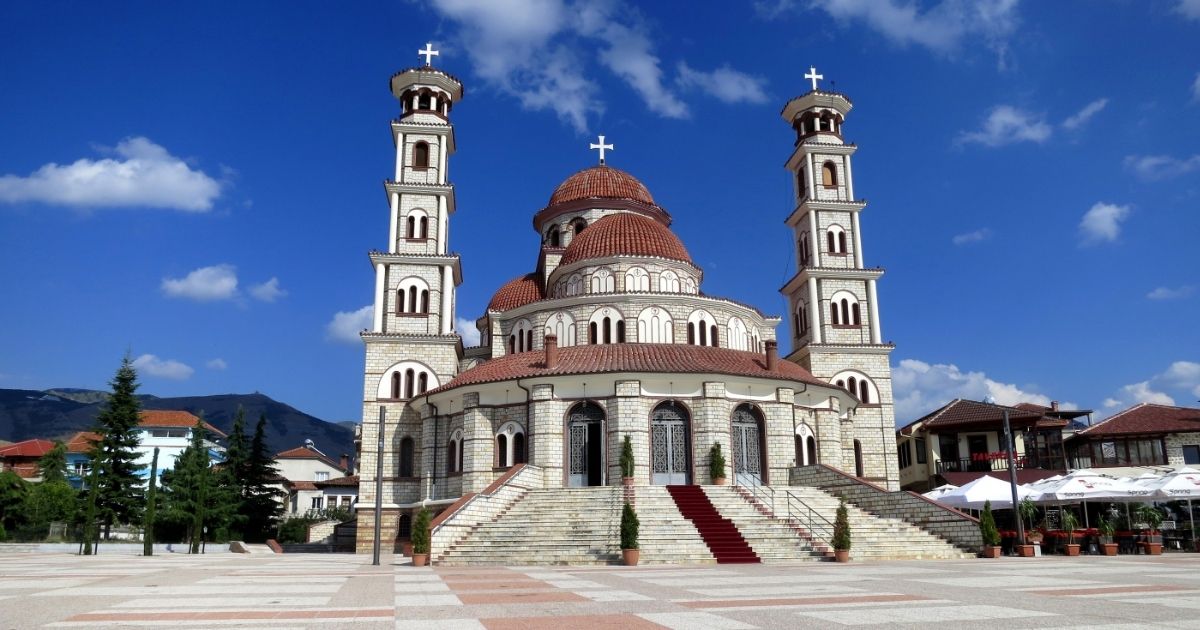
Outdoor Adventures – Berat Albania
Berat is not only about history. It also offers outdoor adventures for nature lovers.
The Osum Canyon is one of the most famous attractions. The canyon stretches for several kilometers with high cliffs. Visitors can hike along the edges or go rafting in spring. The river is calm in summer, perfect for swimming.
The Tomorr Mountain is another highlight. It is considered sacred and attracts many pilgrims. Hikers climb its slopes for fresh air and wide views. In winter, snow covers the peaks, creating a magical scene.
Cycling is popular around Berat’s villages. Small roads wind through olive groves and vineyards. Riders enjoy peaceful landscapes and warm village hospitality.
Adventure seekers also try paragliding over the valley. The flight offers a bird’s-eye view of the red rooftops and the Osum River. It is both thrilling and unforgettable.
Even simple walks in the countryside can be rewarding. The air is fresh, and the scenery changes with the seasons. Spring brings blossoms, while autumn adds golden colors.
Outdoor adventures in Berat provide balance. Visitors enjoy both excitement and calm, often in the same day.
Read also – How to Become a Trip Planner: Turning Passion into Profession
Local Cuisine – Berat Albania
Berat offers a rich culinary experience that reflects Albanian traditions. Meals are fresh, flavorful, and often shared with family.
Byrek is a staple, made with cheese, spinach, or meat. It is served in bakeries or homemade for breakfast. Tavë kosi, baked lamb with yogurt, is another local favorite. Its creamy texture and subtle spices make it memorable.
Vegetarian options include stuffed peppers, eggplants, and seasonal vegetable dishes. Olive oil from nearby groves enhances flavors in almost every recipe. Fresh bread, cheese, and yogurt accompany most meals.
Sweets are popular, such as baklava or ballokume, often enjoyed during holidays or festivals. Fresh fruits like figs, grapes, and pomegranates are common desserts.
Berat also has small restaurants and cafés overlooking the river. They serve traditional meals while offering beautiful views. Dining is not just about food but also community and hospitality. Sharing a meal with locals creates a lasting connection to the city.
Sampling the cuisine is essential for understanding Berat’s culture. Every bite tells a story of history, tradition, and local ingredients.
Read also – Angels Landing Deaths: A Sobering Look at Risks
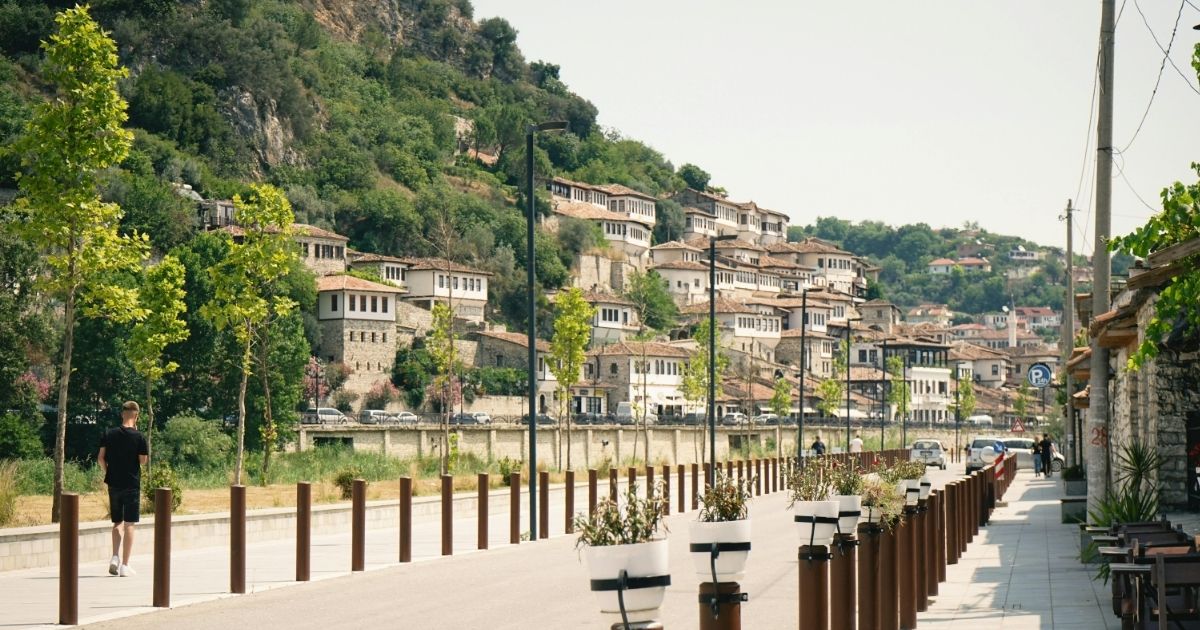
Day Trips Around Berat
Berat is surrounded by scenic destinations perfect for day trips. These excursions highlight Albania’s natural beauty and culture.
The Osum Canyon is ideal for adventure. Visitors can hike along the cliffs or go rafting in spring. The river’s turquoise waters make every trip memorable.
Mount Tomorr offers both spiritual and outdoor experiences. Pilgrims climb during religious events, while hikers enjoy panoramic views year-round. The mountain is especially stunning in winter when snow blankets its slopes.
Nearby villages, such as Roshnik and Bogovë, showcase rural Albanian life. Travelers can visit vineyards, taste local wines, and observe traditional farming methods.
Apollonia Archaeological Park is another option. Located about an hour away, it features ancient ruins, including temples, theaters, and mosaics. History enthusiasts will find this site fascinating.
For relaxation, the Osumi River banks provide calm picnic spots. Families often spend afternoons by the river, enjoying nature and local food.
These day trips add variety to a stay in Berat. They balance culture, adventure, and relaxation, ensuring visitors experience the full region.
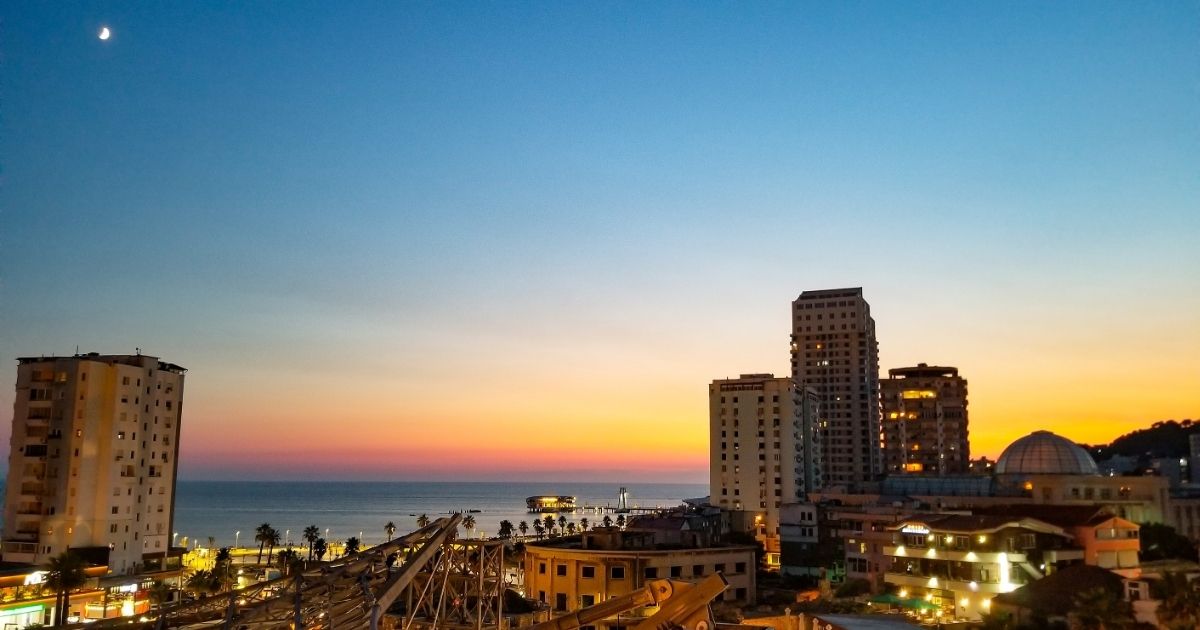
Practical Travel Tips – Berat Albania
Visiting Berat is easier with a few practical tips. Planning ahead ensures a smooth and enjoyable experience.
The city is walkable, so bring comfortable shoes for cobblestone streets and castle paths. Light clothing is recommended in summer, while winter requires warm layers.
Local currency is the Albanian Lek (ALL). Many small shops and markets accept cash only, so carry enough money. ATMs are available but limited in smaller areas.
Public transport exists but is infrequent. Renting a car allows more flexibility for day trips around Berat. Roads are generally good, though some rural paths can be narrow.
Accommodation ranges from guesthouses inside the castle to modern hotels in the city center. Booking ahead during peak seasons is advised.
Try to learn basic Albanian greetings. Locals appreciate the effort, and it enhances interactions in markets and cafés.
Safety in Berat is generally good. Keep personal belongings secure, especially in crowded tourist spots. Respect local customs, particularly when visiting religious sites.
Carrying water and sunscreen is useful for exploring outdoor attractions, especially in summer. A small backpack keeps essentials handy while walking or hiking.
By following these practical tips, visitors can enjoy Berat comfortably, safely, and fully immerse themselves in its culture and history.
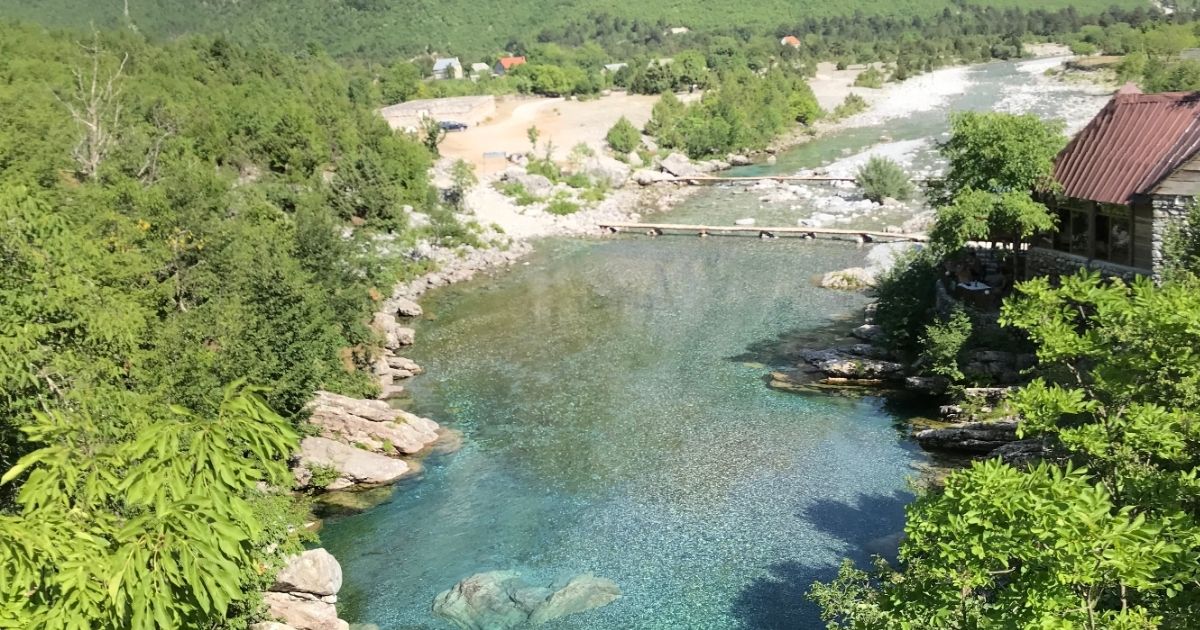
Conclusion
Berat is a city where history, culture, and nature meet in harmony. Every corner tells a story.
The castle, with its churches and mosques, offers a glimpse into centuries of coexistence and architectural beauty.
Museums preserve art and traditions, connecting visitors with Albania’s rich cultural heritage. Artifacts and icons tell stories of faith and creativity.
Local life within the castle brings authenticity. Stone houses, markets, and daily routines create a living, breathing historical site.
Surrounding landscapes, including Mount Tomorr and the Osum River, provide adventure and tranquility. Hiking, cycling, and rafting enhance every visit.
Traditional cuisine delights the senses. Byrek, tavë kosi, fresh bread, and local sweets showcase Albania’s culinary richness. Dining is a shared, welcoming experience.
Festivals and events keep culture alive. Music, art, and wine celebrations engage locals and travelers alike.
Berat offers day trips for exploration. Nearby villages, rivers, and archaeological sites add depth and variety to any stay.
With practical tips, visitors can navigate the city comfortably, enjoying its charm safely and efficiently.
In essence, Berat is more than a destination. It is an experience where history, nature, and culture intertwine. Travelers leave with memories of beauty, warmth, and timeless stories.

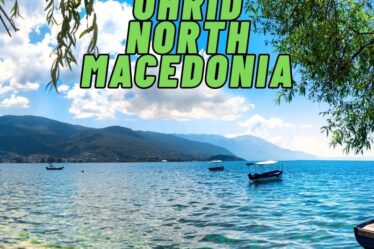


[…] also – Berat Albania: Guide to the City of a Thousand […]
[…] also – Berat Albania: Guide to the City of a Thousand […]